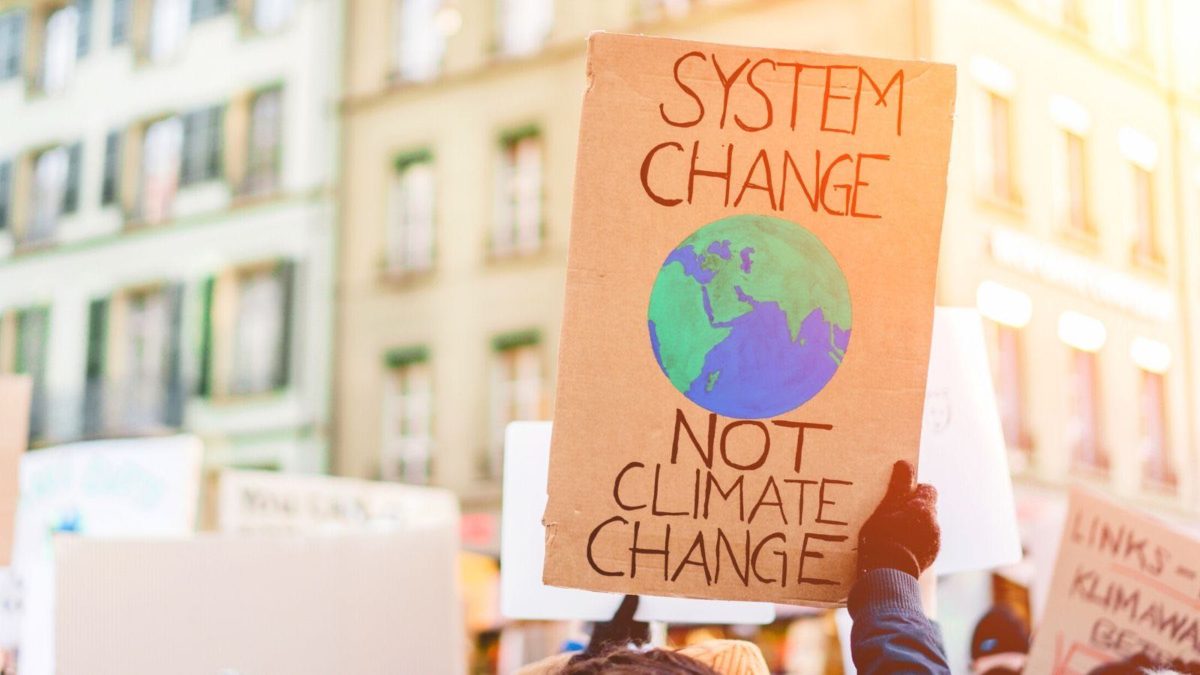Knowing ways to reduce your carbon footprint while traveling is essential. Eco travel is fast becoming the most popular type of tourism. In order to travel greener, you need to understand just how big your carbon footprint is and ways to reduce it.
This post may contain affiliate links, which means I may earn a commission if you click a link and make a purchase. As an Amazon Associate, I earn from qualifying purchases.
This guide explains where your carbon footprint is going and explains ways to reduce your carbon footprint. These can vary from small, simple acts to life-changing decisions.
Table of Contents
The Energy We Are Using
Like our water footprint, we also have a carbon footprint/energy footprint (most of it occurring without us really realizing). At this stage it is really unavoidable, but, there are ways to reduce your carbon footprint while traveling.
Energy cannot be created or destroyed, it transfers from one form to another. This is the law of conservation of energy. It means that when we use energy to power our lights or drive our cars, we are converting the stored energy potential of the fuel (in 80% of the cases this is coming from fossil fuels) into something usable, like movement or heat.
Out of energy in 2088?
We know that fossil fuels are non-renewable (they will eventually run out). It’s predicted (if we continue at the rates seen today and no substantial improvement in renewable energy is made soon) that we will totally run out of fossil fuels by about 2088.
That’ll be day zero. So, chaos will begin long before that date in its anticipation.
Energy means waste (at the moment)
Not only will we run dry of our fuel supply, but while we are doing so, we are creating huge amounts of waste and polluting the very environment we are trying to live in and explore.

Saving Energy
There are two key phrases associated with saving energy and reducing our energy footprint while traveling (or anytime):
Energy conservation – Changing something that you are doing in order to use less energy.
Energy-efficient – Improving a product or the act of using energy to reduce the amount used.
Where Is Your Carbon Footprint Going?
It’s difficult to determine just how much fossil fuels or energy you are using. It depends heavily on a couple of key factors, such as:
- Where in the world you are
- What exactly you are doing/ what is your lifestyle
We can, however, summarize our use and potential strategies into the following three main categories: Commercial/Industrial, Domestic & Transport. Each has potential efficiency and conservation improvement ideas.
Energy use in summary

Ways To Reduce Your Carbon Footprint While Travelling
This might seem irrelevant to you as a traveler or someone on holiday. But everything you’re buying, eating, wearing, and listening to (music-wise), has come from somewhere and has gone through some kind of commercial/ industrial process.
Are there ways to reduce your carbon footprint from a commercial sense?
Minimalism
One of the easiest ways to reduce your carbon footprint is to buy less. This is a theme that comes up no matter which way you look at sustainability. Stuff uses resources and energy and creates waste (some will be degradable/natural, some waste will not).
You really don’t need much stuff when you’re traveling (and if you do, you might be missing the point).
Avoid buying new wardrobes to go traveling, new equipment, new technology, etc if you’re planning to only use it while on your trip.
Try renting, borrowing, and shopping vintage. Less stuff is less weight which makes traveling easier on you and the environment.
And of course say no to plastic where you can!
Sustainable Products
Another way to reduce your carbon footprint is to choose your things wisely, by learning how to eco shop. Many products are made from petroleum, which comes from crude oil (one of our quickly diminishing non-renewable sources), these include plastics, nylon, cosmetics, vaseline, to name a few. It’s important to avoid plastic in all it’s forms.
Try converting to more natural products from brands with plastic free packaging and conscious manufacturing. Choose sustainable fashion and opt for local products and services.
Handmade crafts will more likely have a much less negative environmental impact than a large-scale manufacturing warehouse.
Carbon Offsetting Companies
In the commercial and industrial sense, there is really no way to mass-produce products without having some kind of carbon emissions (at this stage).
Is carbon offsetting one of the ways to reduce your carbon footprint?
Companies can pay to offset their carbon waste. This means that they are paying someone else to perform an act (or series of acts) that will reduce their carbon emission either in the short term or long term. Planting forests is one option (trees turn carbon dioxide back into oxygen). It doesn’t really solve the carbon emission problem, but at the moment it’s better than doing nothing.
When you choose companies that encourage carbon offsetting it will encourage more companies to do so. How will you know if they are? At this stage most companies that are involved in carbon offsetting will let you know up front, they are proud of it, and they should be.
Where To Offset Your Carbon Footprint
The idea is for companies (and all of us) is to become carbon neutral (ideally produce no carbon waste). But for now, to have the same amount of carbon that is emitted to be offset (carbon neutral). Some companies are already on their way.
For example, if you’re traveling and want to ship something home – DHL actually has just been nominated as a carbon-neutral company for instance.
Want to rent a car while traveling? – AVIS is one of the world leaders in its field for carbon offsetting.
Be Energy Efficient
There are more and more options nowadays to stay in places that are truly eco-conscious. It makes reducing our energy footprint while traveling a collaborative effort.
Many eco resorts and eco accommodation will have invested in renewable energy sources
Domestic Energy Use
Domestic use is not confined to your own house. It’s wherever you travel to. You’re using lights, electricity, power. That’s burring energy.
Looking at the average household energy use distribution for the US (for example purposes only). We can see that the top four energy users in households are:
- Heating and cooling (that’s air-conditioning!)
- Water heating (that’s your hot showers)
- Washer and dryers (clothes washing)
- Lighting (dependant on the types of lights used [energy efficient lights use less])
How to Reduce Your Carbon Footprint While Traveling in a domestic sense
Therefore, let’s assume you’re not on a camping trip. You should try staying in an eco resort, as many of these ways to reduce your carbon footprint are already considered. Otherwise, the top four ways to save energy in the places you’re staying are:
- Adjust your air-conditioning. Use the air-conditioner to “take the edge off” only and not competently change the climate of the place. Turn it off when you leave.
- Reduce your hot showers. If you’re staying somewhere warm (island holiday), consider having cool showers.
- Avoid unnecessary washing and drying. If you’re in a hotel, opt-out of bed changing unless the bed is actually dirty. You can reuse your clothes while traveling if they’re not actually “dirty”. Whenever possible, hand wash a small stain and hang the clothing to dry instead of opting for dryers.
- Turn lights off when not in use! If you’re in a hotel/hostel room and the lights don’t turn off when you leave, turn them off.
- Buy Local Produce: Supporting the local industry is one of the key elements of eco-travel. The further something has to travel to get to you, likely, the more fuel/energy it’s burning and therefore creating more waste. When possible, get local produce and save those traveling miles!
- Unplugging your electronics from the wall when not in use can actually save energy too (don’t forget to do this at home before you leave)!
- Solar powered travel chargers – designed more for camping purposes, they are also great if you’re on a trip somewhere with a lot of sunlight and want to save energy waste.
Ways to reduce your Carbon Footprint with transport
This is where things get interesting/difficult for travelers. Though, there are ways to reduce your carbon footprint while traveling.
Humans are traditionally explorers, and as our technologies got more advanced, our exploration got broader. We’ve developed transportation modes to go further and see more in less time. But these have come at a cost.
Traveling waste (emissions) can be significant. Here are the comparative modes of carbon emitted per vehicle type.

Ways To Reduce Your Carbon Footprint While Flying
Looking to visit some beautiful beaches in Jamaica, or in the US Virgin Islands? You’ll most likely have to fly there unless you have an abundance of time on your hands. There’s no doubt that the development of the commercial airline has opened up a literal world of opportunity for the new age traveler, but it has come at a cost.
“According to the International Civil Aviation Organization (ICAO) estimates, there were 3.7 billion global air passengers in 2016 — and every year since 2009 has been a new record-breaker.
By 2035, the International Air Transport Association (IATA) predicts a rise to 7.2 billion. Like the planes themselves, the numbers just keep going up.
A few years ago, the environmental group Germanwatch estimated that a single person taking one roundtrip flight from Germany to the Caribbean produces the same amount of damaging emissions as 80 average residents of Tanzania do in an entire year: around four metric tons of CO2.”
If you can’t avoid flying, these are some ways to reduce your carbon footprint while flying:
Fly Less
Flying less is best, but depending on where you are and where you’re going, this might not be a choice.
Fly Direct
The more direct a flight and the fewer multiple stops you do, the better it is for your carbon footprint. Flying direct is often more expensive (this is because flight costs are often based on demand and not necessarily fuel costs).
Check your airline
Not all planes are created (or maintained) equally. Therefore, different airlines have different fuel efficiencies that will help you reduce your negative impacts. A study shown in US domestic airlines showed a difference in the efficiency of 26% between the best and worst in the US, which is significant.
Offset your carbon emission
Some airlines provide a direct carbon offset as part of the flight purchasing option. Otherwise, there are a variety of companies offering standardized carbon offset plans and will work out just how much you need to offset to be neutral. It’s not a full-proof plan, but it can have positive benefits. Here’s a good article about it.
Flying in the day
This is apparently better than night time for reducing emission effects; as emissions reflect sunlight to reduce warming. It’s a stretch but might work until we invent a plane with no emissions.
Flying economy
It’s cheaper, less comfortable. You are using less space per fuel consumption, and therefore use a lesser amount per volume to make the seat more efficient.
How to reduce your carbon footprint on land
- Walking or cycling is the most sustainable way to travel by land, though not always practical, especially for long distances or between bodies of water. But it’s a great starting point.
- Often big cities have free walking tours. They’re a great way to see the inner city, avoid unnecessary vehicle emissions
- Bicycle hire. Many big cities and some rural areas have bicycle hire. This is a great way to get around a town/or city.
- Taking the train is one of the most energy-efficient ways that you can travel long distances (by vehicle). Obviously, not all places have trains, but getting around Europe, for instance, can be done by train very comfortably.
- Ridesharing – Depending on where you are, Uber and Lyft, offer ridesharing. You can pick up multiple people on the way to somewhere if it’s a sensible route
- Taking the bus – Obviously, this will depend on where you are going. I traveled the whole of South America by bus and it was an amazing experience.
Ways to reduce your carbon footprint by sea
Websites like Crewbay and Findacrew offer great opportunities for perspective travellers to help out on sailboats.
Every day, around the world there are people traveling from place to place by boat and looking for additional crew members to join them and help share costs. You can get day trips to month-long trips via multiple different countries.
If you travel by sail boat, it’s a great experience and great for the environments using mostly renewable energy (the wind!). A lot of the offers do not require any sailing experience, as long as you’re willing to input costs and help out where needed.
This is such a great way to eco travel.
In Summary
There’s three main forms of energy use adding to our energy footprint while travelling:
- Commercial/Industrial
- Domestic
- Transport
For each of these, there are ways to both conserve (change your actions) and reduce the energy footprint (use more efficiently).
As with all eco travel, it comes down to choices. There are choices you can make before your trip and while on the road to help reduce your energy footprint while traveling. Every bit does make a difference, especially when the word is spread amongst the traveling community. A great way to do so is to share save earth and save water slogans.
Any thoughts?
What are your thoughts on ways to reduce your carbon footprint? We’d love to know, please leave a comment below, or join a sustainable Pinterest Group Board.
Like This Article? Pin it!






Wow! What a comprehensive article! There are so many great ideas and helpful tips on here. Will definitely be saving this for later. We do what we can, including always donating to offset our carbon emissions when we go on holiday. But we know we can be doing more!